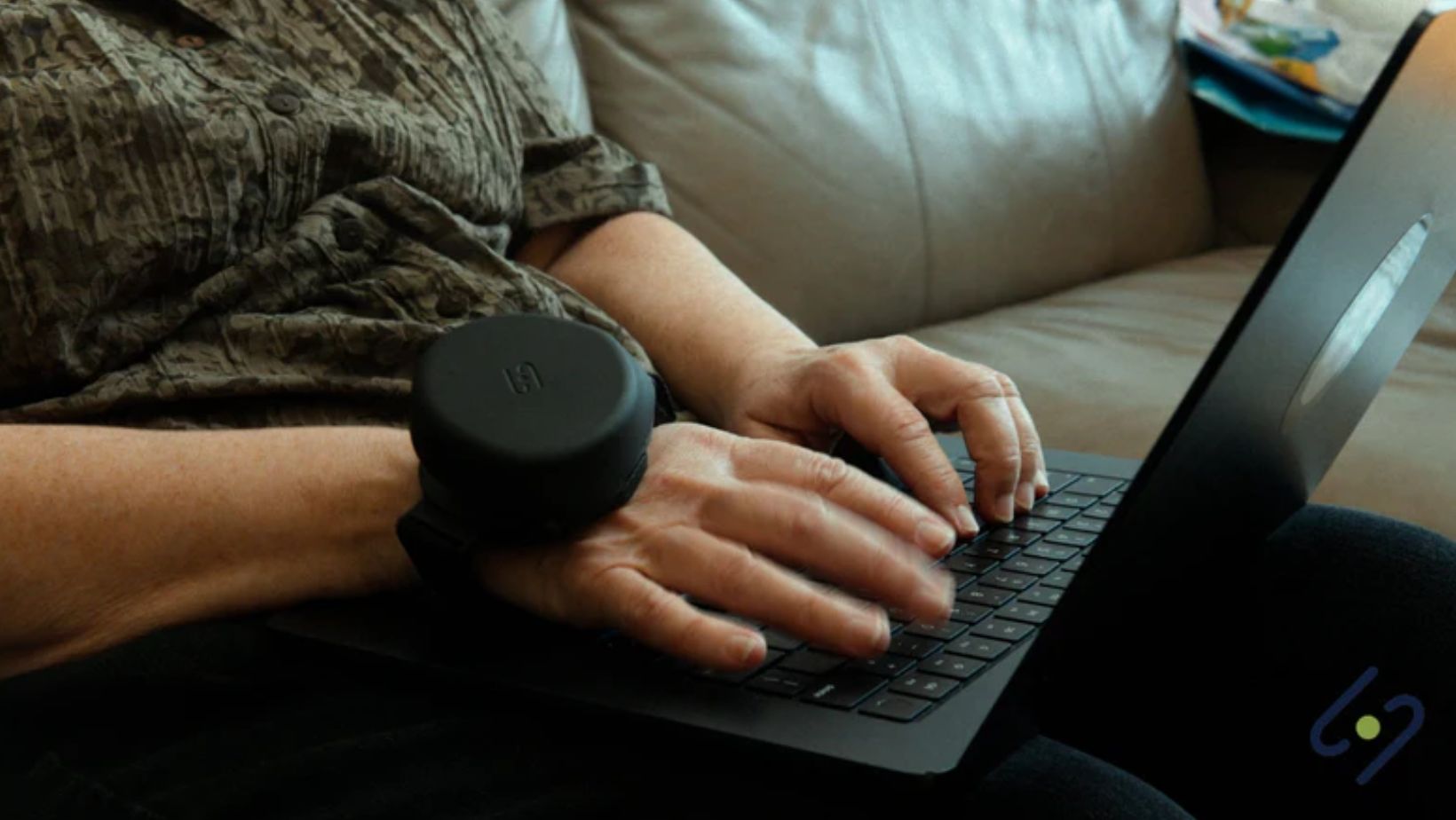Living with hand tremors from Essential Tremor or Parkinson’s Disease can be frustrating, especially when everyday activities start to feel uncertain. Simple motions — holding a cup, writing a note, or sending a text — may take extra effort, focus, and patience. Over time, this constant adjustment can lead to stress and fatigue.
But managing tremors isn’t just about the body — it’s also about the mind. Developing calm, structured approaches and using the right tools can help restore control and make daily life feel more balanced. With the right combination of practical strategies and assistive technology, independence becomes not just possible, but sustainable.
Understanding Tremors: A Daily Challenge
Tremors are involuntary rhythmic movements caused by irregular communication between the brain and muscles. While Essential Tremor and Parkinson’s Disease are different conditions, both can cause hand shaking that interferes with fine motor control.
These tremors aren’t constant — they may fluctuate depending on stress, fatigue, or medication schedules. What often goes unspoken is the emotional side: the frustration of losing control over once-simple tasks, or the anxiety of performing them in public.
Managing tremors effectively means addressing both the physical symptoms and their everyday impact. It’s about learning to live with change while staying engaged in the routines that bring comfort and meaning.
Creating a Stable Daily Environment
A calm environment can make a significant difference in managing tremors. While tremors cannot be wholly eliminated, specific adjustments can make daily tasks easier and reduce unnecessary strain.
Organize frequently used items: Keep essential objects within easy reach to limit extended arm movements.
- Use adaptive utensils and tools: Weighted cutlery, wide-handled pens, and spill-proof containers can enhance stability.
- Simplify routines: Break tasks into smaller, slower steps to maintain precision without pressure.
- Prioritize ergonomics: Choosing chairs, tables, and accessories that support proper posture can reduce tension that worsens tremors.
Small adjustments build consistency, and consistency builds control — not by eliminating tremors, but by minimizing their effect on your rhythm and focus.
Control Through Routine and Awareness
People living with tremors often develop unique rhythms to navigate their symptoms. Consistent routines can help regulate both physical and mental balance. Setting clear times for meals, rest, and medications helps the body anticipate patterns, which can stabilize energy and focus.
Equally important is pacing. Allowing time for rest between activities prevents fatigue, one of the most common triggers that can intensify tremors. Many individuals find that slow, deliberate actions, combined with well-structured environments, foster a sense of calm and predictability.
Maintaining perspective also matters. Tremors can fluctuate daily, but this variation doesn’t erase progress. Building control means celebrating small successes — the moments when tasks feel smoother or less stressful. These instances of regained steadiness are reminders that balance can return, even if briefly, through consistent care and patience.
Technology as a Tool for Stability
Assistive technology plays an important role in helping individuals regain control in their daily lives. Innovations in biomechanics and engineering now allow devices to adapt to the user’s movement patterns, counteracting tremors while maintaining freedom of motion.
For many, the right device can transform daily routines from frustrating to manageable. Whether it’s a stabilizing glove, a weighted utensil, or specialized writing support, the goal is the same — to restore functionality and independence without sacrificing comfort or simplicity.
Technological solutions, especially when paired with professional medical guidance, can help users find renewed ease in activities that once felt overwhelming.
Maintaining Perspective: Living Beyond the Tremor
Living with tremors means adapting, not surrendering. Each day presents moments of progress — even when they’re subtle. Whether it’s using a new assistive tool, finding a smoother way to perform a task, or experiencing less frustration during meals, these moments matter.
Support from healthcare professionals can also make a difference. Discussing treatment plans, medication options, and assistive technologies with a neurologist or occupational therapist helps ensure that every strategy aligns with your specific condition and lifestyle.
Although tremors can be persistent, managing them with structured care and the right devices can create space for calm, control, and renewed independence.
Steadi-3: Technology That Brings Calm to Motion
The Steadi-3 tremor glove from Steadiwear was designed to help manage hand tremors caused by Essential Tremor and Parkinson’s Disease while prioritizing comfort, control, and independence. As a Class I medical device, it uses a fully mechanical stabilization system — meaning no batteries, charging, or complex maintenance.

This quiet, adaptive mechanism counteracts tremor in real time, helping smooth involuntary movements while preserving natural hand flexibility. The result is a lightweight, comfortable glove that can be worn during everyday activities such as eating, writing, or handling small objects.
Our approach blends science and empathy — offering a solution that not only helps stabilize motion but also restores a sense of calm in daily routines. Our glove represents how thoughtful engineering can make independence more achievable for those living with tremors.
Conclusion
The journey of living with hand tremors is one of adaptation — not defeat. It’s about transforming uncertainty into understanding, frustration into patience, and motion into balance.
With innovations, managing tremors becomes less about limitation and more about rediscovering what’s possible. Every steady movement, every regained action, is a reminder that independence isn’t lost — it’s continuously rebuilt, one moment at a time.



